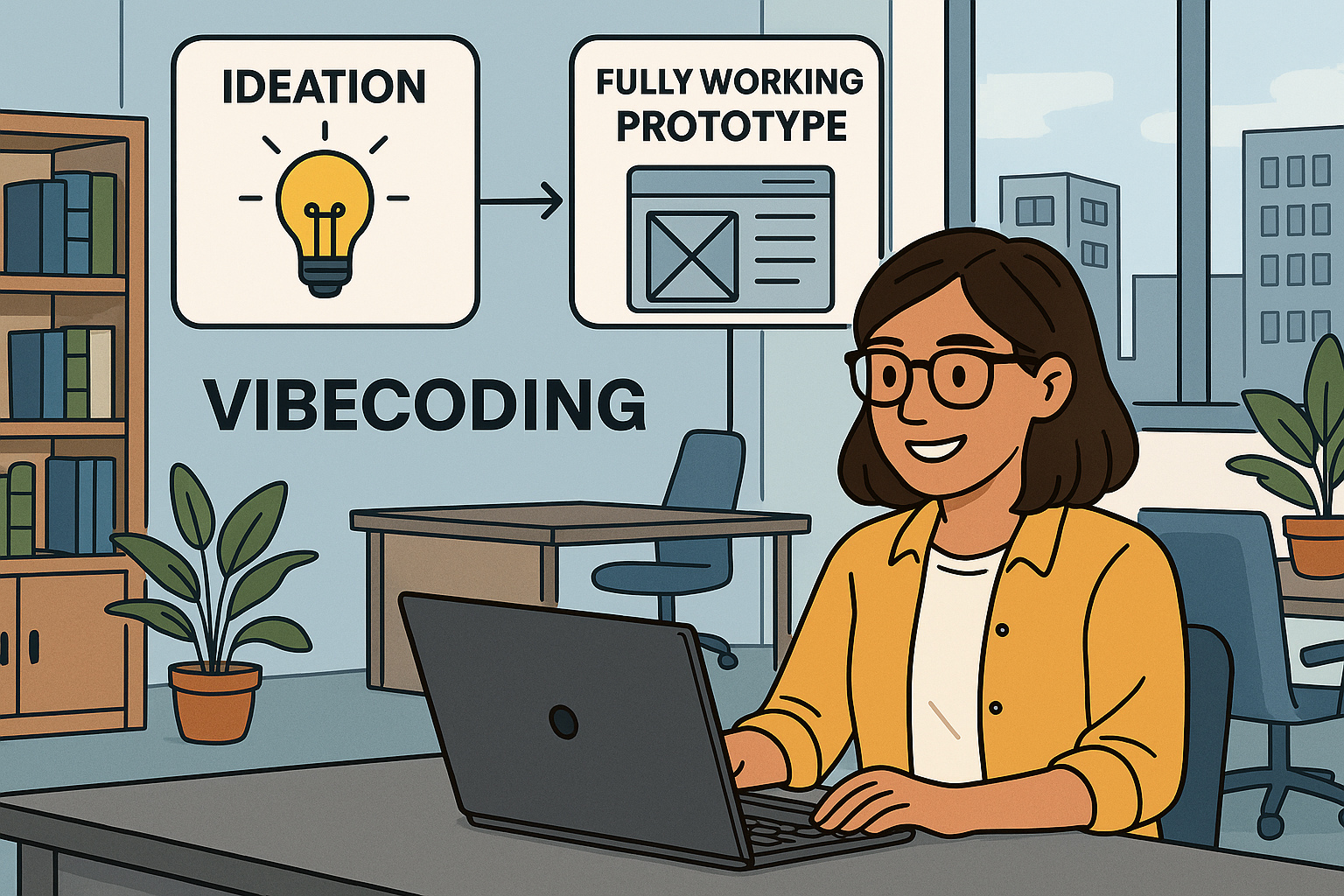May 29, 2025
The Rise of Vibecoding: A New Era for Product Managers

In today's fast-paced tech world, the role of product managers is changing in exciting ways. One of the standout developments is something called Vibecoding. This approach allows product managers to quickly turn their ideas into working prototypes using tools powered by AI. It's becoming a game-changer in how products are developed and tested, helping teams work faster and adapt better to market needs.
What Is Vibecoding and Why It Matters
So, what exactly is vibecoding? It’s an approach that uses Gen AI tools to generate code using natural language prompts rather than manually writing code. It relies on Large Language Models (LLMs) to translate natural language descriptions into working code. Here is how vibecoding works:
Step 1: Describe what you want to build with requirements and constraints.
Step 2: The AI tool builds what you specified.
Step 3: Review what was built, find errors and ask the AI tool to fix them.
Step 4: Publish and iterate until you are satisfied
The Benefits of Vibecoding for Product Managers
Traditionally, product managers have needed a lot of help from technical teams to take their idea from a paper concept to a working prototype. With vibecoding, they can now take the reins themselves. First off, it allows for rapid idea prototyping and experimentation. Instead of taking weeks or even months to build a working prototype and get feedback, they can now do it in just hours or days. This quick turnaround helps teams know whether to move forward with a concept or pivot in a different direction.
Tools Powering the Vibecoding Movement
These AI tools fall into two main categories: Low/No-code tools, and code first. Some of the popular tools are listed below, with new ones springing up often.
Low/No-code Tools - Coding is not required here
- Lovable, Bolt, Replit, V0, Firebase, Toolhouse
Code First Tools - These require a code editor, you prompt the AI to generate code for you and review the code.
- Cursor, Windsurf, Copilot, Cline
A Real-World Test: Vibecoding at the Agentic AI Hackathon
I recently got a taste of vibecoding's potential at the Agentic AI hackathon. In just 3 days, I designed a functional Autonomous AI Agentic Platform prototype that helps enterprises build resiliency in their supply chains. My solution involved using Lovable for the User Interface/front end, and Toolhouse AI for the agentic backend as a service which allowed me to define agents and deploy them as APIs. I also integrated with 3rd party APIs to fetch and process data real-time.
Of course, the experience wasn’t without its challenges. I had to navigate real-time data integration and ensure that everything ran smoothly, managing the intricacies of API interactions and user interfaces. Working through limits on API requests and keeping the front end stable was no small feat either. But overall, it was a powerful demonstration of how vibecoding can drive quick and effective innovation.
My journey clearly showed that vibecoding isn't just a passing trend—it's a shift in how product management works. With the right AI tools, product managers can prototype and validate ideas swiftly, speed up innovation, and focus on creating solutions that truly meet customer needs. Vibecoding represents a new way of thinking, encouraging product managers to step up as innovators in their field.
If you're interested in incorporating vibecoding into your product strategy, I’d love to chat and explore the possibilities together!